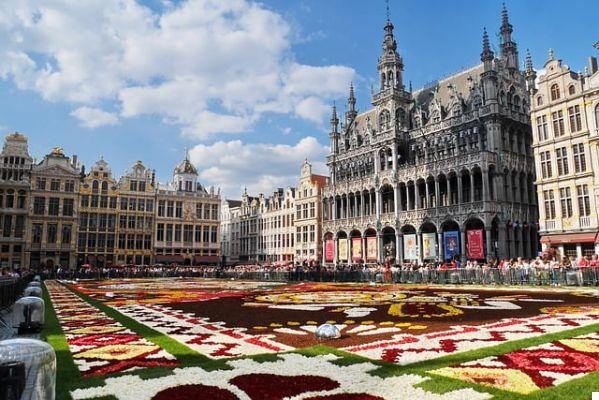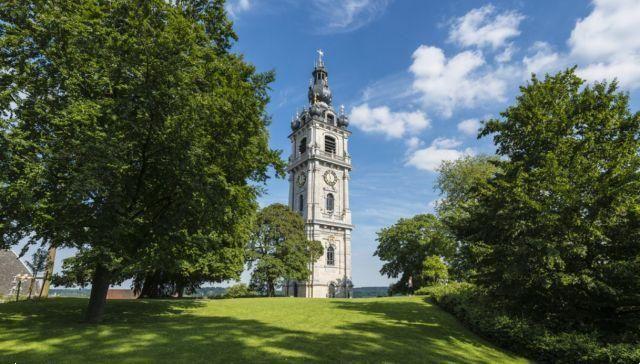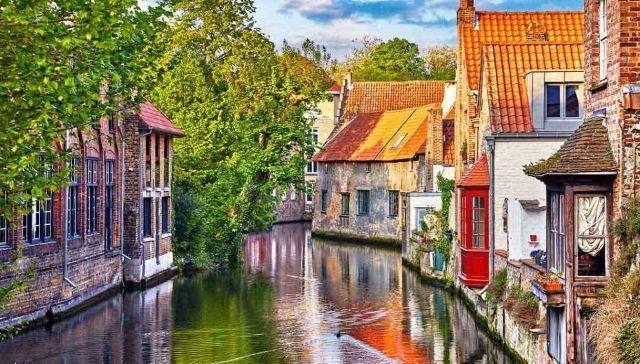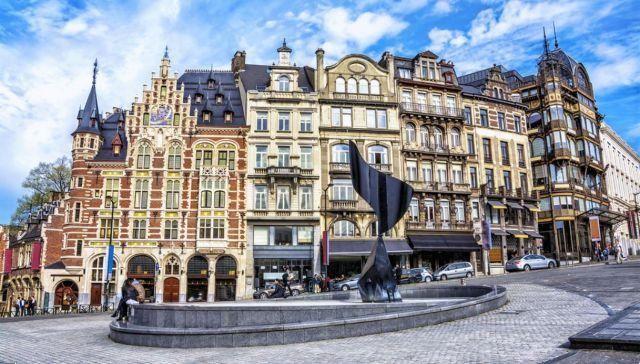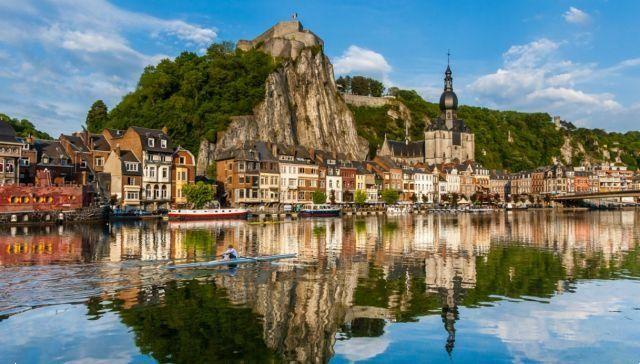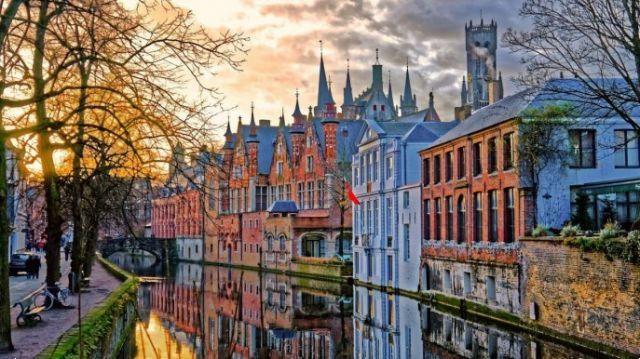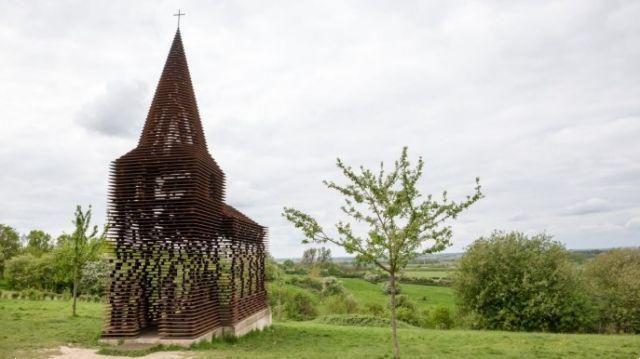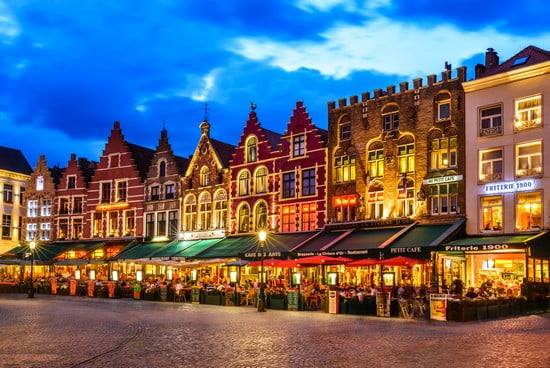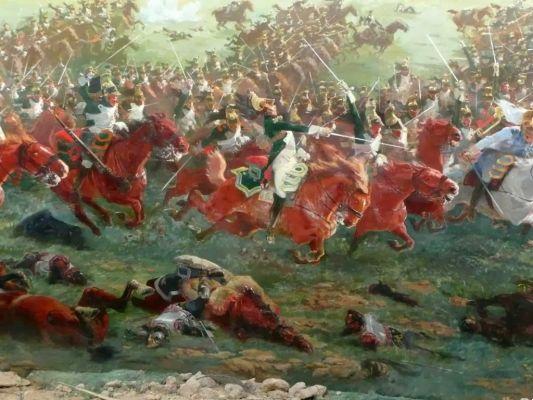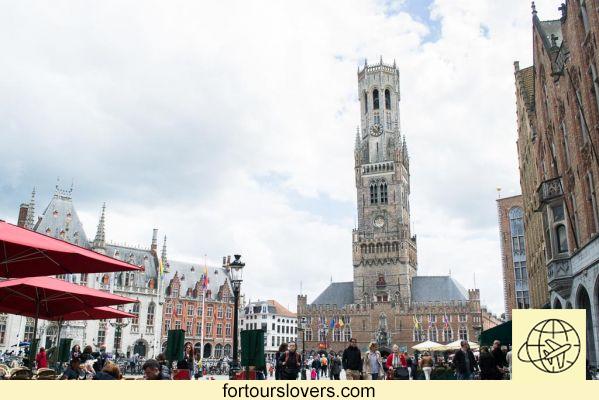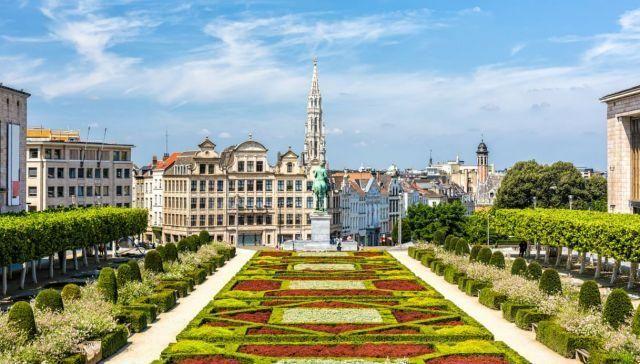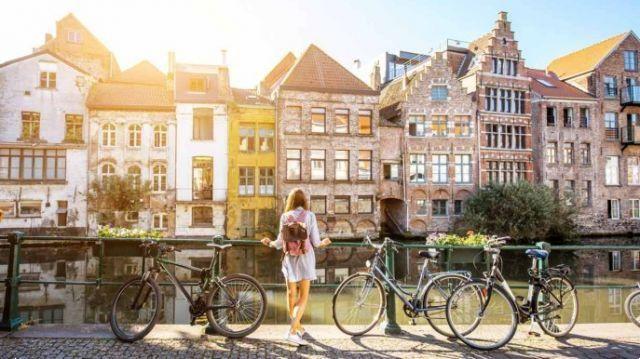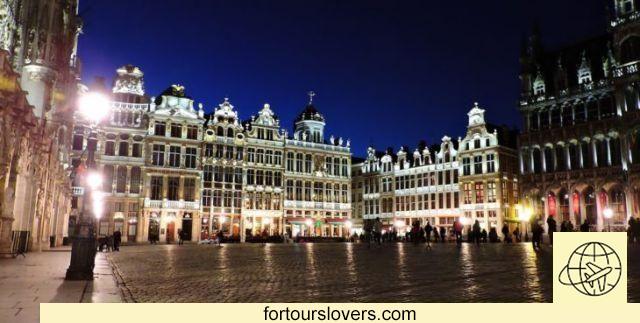
Brussels
11 things to do and see in Brussels and 1 not to doTHEcosmopolitan atmosphere it is certainly Brussels' greatest attraction. At the same time, however, it is the aspect that makes the story more problematic, since it is difficult to find a single thread in front of the quantity of stimuli that the city offers. In the capital of Belgium they live and work Journalists, diplomats, lobbyists and an infinity of other professional figures whose activities are all more or less attributable to the policies of the European Union (the European Commission and the European Council meet in Brussels). Alongside these "luxury immigrants", however, thousands of people live and work North Africans, Polish, Turkish second and third generation. To further complicate the picture is the original division between Flemings e Walloons, without forgetting the nourishment Congolese community, legacy of the Belgian colonial past. Faced with the challenges of history, however, Brussels has not renounced its multiculturalism and tourism continues to represent one of the most important economic voices in the area. After all, it could not be otherwise in a city so rich in art and history that, moreover, has always loved living outdoors. Below, we go to discover the main attractions of Brussels. Happy reading.
1 Grand Place
Since 1998 UNESCO World Heritage Site, the “Grande Piazza” is the obligatory starting point of a holiday in Brussels. It is undoubtedly one of the most beautiful squares in the world, even the most beautiful of all according to Victor Hugo and several other XNUMXth and XNUMXth century artists. The charm of the Grand Place is linked to its own monumentality. All around, in fact, there are the most important historical buildings of the city, among which theHotel de Ville and King's House. The first, seat of the Town Hall, is one of the most important examples in Europe of the prodigies of Gothic architecture. Built at the beginning of the 400th century, the Hotel de Ville was severely damaged by the bombardment of the French troops of Louis XIV in 1695. Nevertheless, it was promptly renovated while maintaining its original architectural lines. Not to be missed the statue of San Michele Arcangelo, patron saint of the city, which surmounts the town hall tower. The Maison du Roi, on the other hand, is one of the many possessions of the powerful Duchy of Brabant. However, previously, bread was sold in this magnificent neo-Gothic palace, so much so that the Flemish name, Broodhuis, keeps track of the ancient intended use. Today the rooms of the Maison du Roi house the city museum which houses, among others, the clothes dedicated to Manneken Pis, the statue of the "little boy who pees" elected as a symbol of the irreverence and sociability of the inhabitants of the Belgian capital. Finally, two celebrations take place in the Grand Place. The first, annual, is theOmmegang, historical re-enactment in period costumes that takes place from 5 to 7 July. The second takes place in August, but only in even years: we are talking about the Tapis de Fleurs, the gigantic carpet of begonias that every two years occupies the entire perimeter of the square.
For learn more on the Maison du Roi, the Ommegang and the Tapis de fluers consult their respective sites:
King's House
Ommegang
Tapis de Fleuers
2 Saint Michel Cathedral
Erected in the early 60s of the last century to the rank of Cathedral, the church of San Michele Arcangelo and Santa Gudula it is one of the most interesting historical buildings in Brussels. Even those not particularly interested in the history of art are in fact struck by the imposing Gothic style of the external facade which he acts as a counterpart, within, the prevalence of Renaissance and Baroque imprints. The church has very ancient origins. It seems that already in the ninth century a chapel dedicated to San Michele was located where the building now stands. Hence the will of the Brabant dynasty - first Henry I and subsequently Henry II - to erect a large church which was both the temple of Christianity in Brussels and one of the symbols of the power of the duchy. It is no coincidence that they are depicted inside the church Charles V and his sister Maria with their respective spouses Isabella of Portugal e Ludwig II of Hungary. On the sides of the benches, along the central nave, the columns with the sculptures of the 12 Apostles (see photo). The carved pulpit depicting it is also very beautiful the fall of Adam and Eve from the Kingdom of Heaven and the gigantic organo (4.300 tubes, 63 stops, 4 keyboards and pedal board) inserted perfectly into the surrounding context.
For the opening hours of the Cathedral of San Michele in Brussels see the table:
>
| Days | Working Time |
| Mon - Fri | 07:00 18:00 |
| Sat * | 08:00 18:00 |
| Sun ** | 08:00 18:00 |
*Visits allowed until 15.30 pm
**Visits allowed starting from 14:00
More information on the history, the archaeological site and the guided tour of the two external towers on the Official site: www.cathedralisbruxellensis.be (English version available).
3 Magritte Museum
Il Magritte Museum is the demonstration of how culture and art can represent a fly for the economy. Since it opened in 2009, this museum has steadily surpassed the 300.000 visitors a year, two thirds of which come from abroad. Therefore a qualified tourism and international vocation with guests from all over the world to admire the genius and creativity of one of the most influential artists of the 900th century. An artist who lived for a long time in Brussels, so much so that the first museum to be dedicated to him in the city was the house where he lived for 24 years with his wife Georgette. At the beginning of the millennium, the need arose to identify an exhibition space suitable for hosting the hundreds of works that now crowded the room dedicated to the artist in the Museum of Modern Art. Paintings, sculptures, posters, musical scores and other works which for a decade have found their definitive place in theAltenoh hotels, a 2500 square meter building a stone's throw from the Museum of Fine Arts (see next point). It is not over, because thanks to the generosity of private collectors and the precious collaboration of other museums, the Magritte Museum in Brussels is periodically enriched with other, and sometimes unpublished, works by the Belgian artist.
For the orari di apertura of the René Magritte Museum in Brussels see table:
>
| Days | Working Time |
| Mon | closed |
| Tue - Fri | 10:00 17:00 |
| Sat - Sun | 10:00 18:00 |
More information on the official website: www. musee-magritte- museum.be (English version available).
4 Royal Museums of Fine Arts
After Magritte it is also a must to visit the Royal Museums of Fine Arts of Brussels. In fact, the space dedicated to the master of surrealism is a "rib" of Museum of Modern Art which in recent years has experienced a further "split" with the creation of an exhibition center dedicated to some of the main European artists at the turn of the nineteenth and twentieth centuries. However, the highlight of the royal museums is the Museum of Ancient Art which collects thousands of works of art from the fifteenth to the eighteenth century. Great space for the various Hieronymus Bosch, Bruegel the Elder (see image - "Fall of the rebel angels"), Rembrandt and others but, as mentioned, the rooms of the Museum of Ancient Art host many other contributions from the rest of the continent, in particular from France and Italy. It is not over, because the royal museums of Belgium also include exhibitions dedicated to Constantin meunier e Antoine Wiertz, personalities whose works have deeply marked the artistic life of the small Belgian nation. For more information on each of these museums visit the Official site: www.fine-arts-museum.be (English version available).
5 Palace of Fine Arts
In addition to the Fine Arts Museums we have just talked about, Brussels also boasts a Palace of Fine Arts, an exhibition space dedicated to music, cinema, literature, theater, dance and architecture. More known as "Bozar" this building was built at the end of the 20s of the last century by Victor Horta, the major interpreter ofArt Noveau. Between the end of the nineteenth century and the beginning of the twentieth century, the capital of Belgium was the protagonist of a radical change in the world of architecture, objects and interior design. A change that spread rapidly throughout Europe and that in Italy we usually make it coincide with Liberty style. From an ideological point of view, the art noveau represented a fierce criticism of serial production, daughter of the industrial revolution. A criticism that on the one hand re-evaluated the work of the craftsman; on the other hand, however, he did not renounce to use "hard" materials such as iron, steel and glass which lent themselves well to mechanization processes. The Palazzo delle Belle Arti mentioned above is just one of the testimonies of the art noveau in the city. There are many others made by Paul Hankar, Henry van de Velde e Gustave Serrurier-Bovy architects and designers who, together with Horta, gave an international dimension to this artistic movement. However, Horta's works, starting with his own home now used as museum (the others: Hotel Tassel, Solvay hotels e Hotel Van Eetvelde) since 2000 are UNESCO World Heritage Site. A recognition which, as already stated in connection with the Magritte Museum, has contributed a lot to the development of cultural tourism in Brussels.
For the Bozar opening hours, see table:
| Days | Working Time |
| Mon | closed |
| Tue - Wed | 10:00 18:00 |
| Thu | 10:00 21:00 |
| Fri - Sat - Sun | 10:00 18:00 |
More information on Official site: www.bozar.be (English version available).
6 Museum of Comics
In Brussels the traces of the genius of Victor Horta they are everywhere. Even in the building that houses the Belgian Comic Strip Center (Belgian Comic Strip Center), the famous museum of comics inaugurated in 1989. The rooms with the glass roof of this one former textile warehouse are one of the reasons for the success of the museum which, together with the permanent exhibition with the great classics of comics, gives ample prominence to current events by hosting temporary exhibitions by avant-garde cartoonists from all over the world. As well as from all over the world come the hundreds of thousands of tourists who annually visit this museum to admire Tintin, the Smurfs, Lucky Luke and many others. In addition to fans, the Brussels Comics Museum is also a 'excellent solution for those traveling with children. Seeing portraits of many of your TV heroes is an experience they will remember for a long time. The Brussels Comics Museum is open daily from 10:00 to 18:00. Captions are in French, German and English, but audio guides are available in several other languages for foreign visitors. More information on the Official site: www.comicscenter.net (English version available).
7 King's Palace
Not far from the Palazzo delle Belle Arti we mentioned earlier (see point 5), the King's Palace (Palais du Roi) is another unmissable stop on a trip to Brussels. Built between the late 800th and early 900th century at the behest of Leopold II, Palais du Roi is the official seat of the Belgian monarchy. Official ceremonies and state visits take place here, while the residence of the king and his family is in Laeken Castle, a suburb of Brussels. The interiors of the King's Palace are obviously majestic: the Hall of the Throne Hall of Mirrors Hall of the Goya he Royal Archives they are all environments that are worth a visit. This visit, however, is limited to just over a month a year, from the end of July to the beginning of September (10:00 - 17:00), coinciding with the suspension of the official activities of the monarchy. Attached to the palace is the Brussels park, 13 hectares of public green that connect the official seat of the monarchy with Belgian Parliament (Palais de la Nation). To be seen!
8 Sablon district
Together with the Grand Place, Sablon is undoubtedly one of the mandatory stopsclassic tourist route of Brussels. The district is divided into two large squares: Place du Grand Sablon (Grote zavel) is Place du Petit Sablon (Kleine Zavel). The first is the city antiques center with numerous Art gallery ancient, modern and contemporary. Also here, every weekend, the second-hand market takes place, attracting thousands of people to the area, including tourists and residents interested in buying retro items and vintage clothing. Place du Petit Sablon, on the other hand, is famous for fountain dedicated to the counts Egmont and Hermes executed at the end of the 500th century for having rebelled against the Spanish authorities (see photo). The fountain is surrounded by 48 columns in art noveau style, each representing the ancient city guilds. But there are many reasons to visit the Sablon district. Two in particular deserve to be mentioned here: the confectionery (in the neighborhood there are some of the best chocolate shops in Brussels) and the gorgeous Notre Dame du Sablon church from the unmistakable Brabantine Gothic style.
9 European Quarter
A trip to Brussels cannot exclude the European Quarter. Although there is no shortage of buildings and public parks of environmental and landscape interest (see The Cinquantenaire Park), the reason why a visit is recommended is above all of a political-cultural nature. In fact, this area of the city is home to those "luxury immigrants" referred to at the beginning: journalists, politicians, interns, lobbyists who gravitate around Berlaymont building, seat of the European Commission (see photo), and the European Parliament (the latter halfway with Strasbourg). In short, it is in Européen district that many decisions that matter are taken, with repercussions on the lives of millions of Europeans often without being able to immediately perceive their origin and importance.
For the visiting hours to the headquarters of European Parliament of Brussels see the table:
| Days | July August | September - June | ||
| Mon - Thu | 09:00 12:00 |
14:00 16:00 |
09:00 11:00 |
14:00 16:00 |
| Fri | 09:00 12:00 |
09:00 11:00 |
||
More information on guided tours and to attend the plenary sessions of the European Parliament at the following link: http://www.europarl.europa.eu/visiting/it/bruxelles/presentato-e-visite-dell-emiciclo.
10 Atomium
For many theAtomium is the truth totem of Brussels. More than the thousand traces of Brabantine Gothic and art noveau, more than chocolate and beer, this gigantic monument would represent thesoul of the Belgian capital. A soul that, as mentioned at the beginning, is difficult to grasp as it is the result of age-old ethnic, linguistic and social combinations. Likewise the Atomium, a sculpture that represents a giant elemental iron crystal (enlarged 165 billion times) it avoids any kind of classification being a bit cube and a bit sphere, halfway between sculpture and architecture. The work was created in 1958 on the occasion ofUniversal Exposition (Exhibition) which that year took place in Brussels. The intentions of the time were to symbolize confidence in the use of atomic energy for civil purposes and, more generally, in reconciliation between democracy and industrial development. Since then, the utopia of the Atomium has known many setbacks, but the fact that after more than half a century the sculpture still occupies the Brussels sky line means that those values of civil and technological progress are still the "number "Of the Belgian capital. The nine steel balls (the atoms that make up the elemental iron crystal) are all connected by escalators. The windows of the sphere at the top (102 meters high) give a magnificent view of Brussels from different angles. The Atomium is located inside the Heysel Park in the northern side of Brussels and is open every day from 10:00 to 18:00. More information on the Official site: www. atomium.be (English version available).
11 What to eat
La gastronomy of Brussels could not help but be affected by the melting pot citizen and above all of colonial legacy of the Belgian nation. For example, the passion for mussels, almost always in combination with french fries, cannot be explained otherwise. Moules and frites (mussels and chips) as well as being a dish served in almost all restaurants (many variations) it is often also present in fry shops. And already because one of the things that the Belgians are absolutely proud of is theinvention of french fries. The others are the mythical ones Brussels sprouts chocolate and beer. In the case of chocolate, the reference to the colonial past which we mentioned above is evident. In the Belgian capital i master chocolatiers there are dozens (hundreds considering the whole nation) and in general the artisan production of chocolate is all of the highest level (the best shops are located in Sablon district). Similar speech for the beer. In Belgium a lot of it is drunk and exported. Leffe is among the most famous brands but there is no shortage artisanal productions of the highest level.
1 Watch out for pickpockets
As in all cities with a high tourist density, you can also come across Brussels thieves and pickpockets. precautions are the same as always: do not leave the bag unattended at the tables of bars and restaurants; don't run around with a lot of cash; do not keep your wallet in the back pocket of your pants; be careful if you need to withdraw from the ATM in the late evening, etc.




